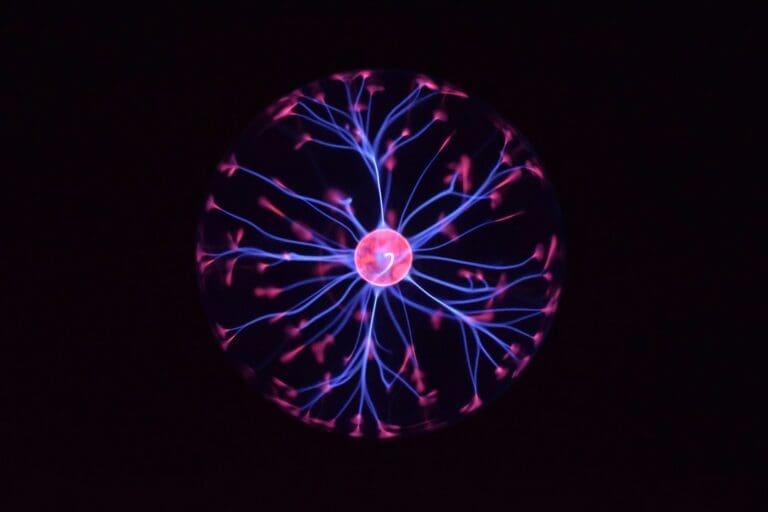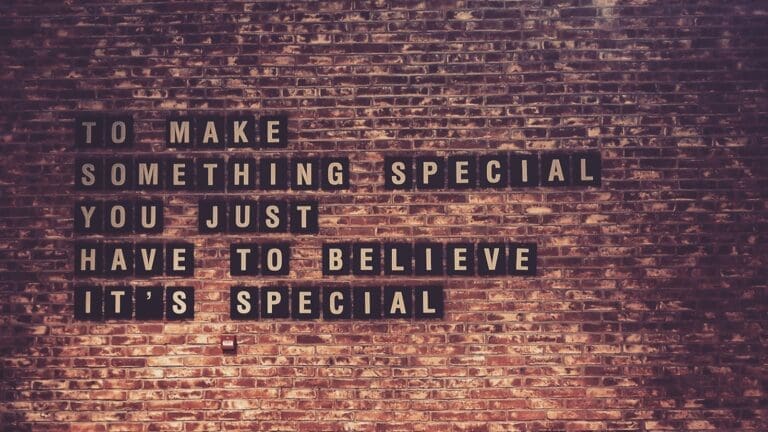Start Simple, Expand Later
I’ve built and abandoned more note-taking systems than I care to admit. Each time, the pattern was eerily similar: discover a new app or methodology, spend hours setting up the perfect structure with tags, templates, and cross-references, use it enthusiastically for a week or two, then watch my beautiful system gather digital dust as I revert to scribbling notes wherever convenient.
This cycle of productivity enthusiasm followed by abandonment is both frustrating and counterproductive.
Every failed system meant hours of wasted setup time and, worse, valuable notes scattered across multiple abandoned platforms.
The breakthrough came when I applied a core project management principle to my personal note-taking: start with a minimum viable product and iterate based on actual usage.
By beginning with only the essential components and expanding gradually in response to genuine needs, I finally built a system that evolved naturally with my workflow instead of collapsing under its own complexity.
In this article, I’ll show you how to build a note-taking system that grows with you rather than overwhelming you from the start.
You’ll learn why complexity is the enemy of consistency, how to identify your true baseline needs, and the strategic approach to expanding your system without breaking the habits that make it valuable in the first place.
The common path to note-taking failure
Three months ago, I found myself staring at my computer with that familiar feeling of defeat. Obsidian was open with its dashboard of organized notes that I hadn’t touched in weeks.
Next to it was a chaotic collection of Apple Notes entries, and scribbled thoughts on my reMarkable – the actual record of my thinking during that period.
This wasn’t my first rodeo. I’d been through the same cycle with Notion, Evernote, Roam Research, and countless other tools. Each time, the pattern was identical:
- Discover a promising new note-taking tool or methodology
- Spend hours researching the “perfect” setup
- Implement an elaborate system with tags, templates, and complex organization
- Use it religiously for a week or two
- Gradually use it less as the friction of the complex system becomes apparent
- Abandon it entirely and revert to the path of least resistance
The failure wasn’t in the tools themselves – they’re all excellent platforms. The failure was in my approach. I was building a Formula 1 race car when what I needed was a reliable bicycle I’d actually ride every day.
You might recognize yourself in this pattern if you’ve ever:
- Created an intricate tagging system you never actually used
- Set up dozens of templates you rarely filled out
- Built complex dashboards that looked impressive but felt cumbersome to maintain
- Found yourself taking quick notes in a different app because your “real” system felt too heavy for casual thoughts
What I’ve learned is that consistency beats complexity every time when it comes to note-taking. A simple system you use daily will outperform an elaborate system used sporadically, no matter how theoretically powerful the latter might be.
The benefits of the incremental approach
Contrast my failed complex systems with what my note-taking looks like today: I start with basic, unstructured notes in a simple tool. As patterns emerge in how I actually use my notes (not how I think I’ll use them), I gradually introduce structure only where needed.
I add features when their absence causes friction, not because they seem cool or useful in theory.
The result is a system that:
- Gets used consistently because it matches my actual behavior
- Evolves with my genuine needs rather than my productivity fantasies
- Maintains a healthy balance between structure and flexibility
- Grows in capability without growing unnecessarily in complexity
- Becomes more valuable over time rather than collapsing under its own weight
This incremental approach aligns perfectly with what we know about habit formation. According to James Clear‘s work in “Atomic Habits”, the key to building lasting habits is making them obvious, attractive, easy, and satisfying. A minimal note-taking system checks all these boxes because it reduces friction to entry.
The benefits of starting simple extend beyond just maintaining the habit. When you begin with minimal structure, you give yourself space to discover your authentic note-taking patterns rather than forcing yourself into someone else’s ideal system.
This organic growth leads to a setup that’s uniquely suited to your thinking process.
You can tell your approach is working when you notice:
- You’re capturing more thoughts consistently than before
- Your notes are actually getting reviewed and used
- Your system feels helpful rather than burdensome
- You’re gradually discovering natural organization patterns
- Adding new elements feels like a relief, not an obligation
Let’s explore how to implement this incremental approach in practice.
Start with the core: The minimum viable note-taking system
The most crucial step is defining your minimum viable note-taking system – the simplest possible setup that delivers genuine value. This varies from person to person, but the key is ruthless minimalism at the start.
A true minimum viable note-taking system typically includes just:
- A single, reliable capture tool that’s always available
- A basic organizational structure (often just a chronological list to start)
- A simple retrieval method (usually just search functionality)
- A regular review habit (even if it’s just glancing through recent notes)
That’s it. No complex tagging systems, no elaborate templates, no interconnected databases – just a reliable way to capture and retrieve thoughts.
For me, this started with Apple Notes on my iPhone and Mac. The tool itself doesn’t matter as much as its availability and simplicity. Your minimum viable system might be:
- Notion with a single “Daily Notes” page
- Obsidian with just a folder of chronological markdown files
- Google Keep with unorganized note cards
- Craft with a handful of unlinked documents
- Even a physical notebook with dated entries
The key is to focus on the habit of consistent capture first, before worrying about optimal organization. As a project manager, I see this as the critical path: without the capturing habit, no amount of organizational sophistication matters.
To identify your specific minimum requirements, ask yourself:
- What’s the simplest way I could capture thoughts throughout my day?
- What’s the absolute minimum organization I need to find things again?
- What’s the most friction-free setup I could create?
- What system could I realistically maintain even on my busiest days?
Once you’ve identified this minimal setup, commit to using just this simplified system for at least 30 days. This gives you time to establish the baseline habit and gather real data about your usage patterns.
The strategic expansion trigger points
After establishing your minimal system and using it consistently, you’ll naturally encounter friction points – places where your simple system falls short of meeting your needs. These friction points are gold. They’re not failures of your system; they’re signals for strategic expansion.
The key principle: Expand in response to repeated friction, not hypothetical needs.
Here are legitimate expansion trigger points I’ve encountered in my own note-taking evolution:
- When you find yourself repeatedly searching for the same type of note
- When you notice certain notes naturally forming their own category
- When you consistently need a specific piece of information in your notes that isn’t being captured
- When you’re maintaining the basic habit without effort and want more value
- When a specific type of note would be significantly more useful with additional structure
Contrast these with premature expansion triggers to avoid:
- Reading about a cool feature in an article or forum
- Seeing someone else’s impressive setup on YouTube
- Thinking you “should” be using a particular organizational method
- Wanting your system to look more sophisticated
- General dissatisfaction without specific friction points
I’ve learned to evaluate potential expansions using these questions:
- Has this specific limitation caused actual friction multiple times?
- Would fixing this issue directly improve my note usage?
- Is this an enhancement to my existing workflow, or a new workflow entirely?
- Can I implement this change without disrupting my current habits?
If the answers suggest a legitimate need, then and only then is it time to expand your system.
How to add complexity without breaking your system
Once you’ve identified a genuine need for expansion, the key is adding complexity in a way that strengthens rather than undermines your existing habits. This requires a deliberate, incremental approach.
The guiding principle here is: Change one thing at a time.
When I need to expand my system, I follow this process:
- Identify the specific friction point. For example, “I’m struggling to find project-related notes among my daily notes.”
- Design the smallest possible solution. In this case, maybe just adding a project tag or moving project notes to a dedicated folder.
- Implement the change while maintaining the core system. Keep everything else exactly the same while introducing just this one modification.
- Use the modified system for at least two weeks. This gives you time to integrate the change into your habit patterns.
- Evaluate whether the change improved your system. Did it resolve the friction without introducing new problems?
- Only then consider the next expansion. If this change is working well, you can consider addressing the next friction point.
This methodical approach prevents the system bloat that kills most note-taking setups. It ensures each addition actually improves your workflow rather than just making it look more sophisticated.
Some examples of strategic expansions I’ve successfully implemented:
- Adding project tags when I found myself repeatedly searching for project-related notes
- Implementing a weekly review when I realized I was capturing useful information but rarely revisiting it
- Adding a “waiting for” tag when I found myself repeatedly searching for notes about pending items
Each of these expansions addressed a specific friction point I’d repeatedly encountered, and each was implemented independently with time to adjust before adding another layer.
The continuous evolution mindset
The ultimate goal isn’t to reach some “perfect” final note-taking system. Instead, think of your system as a living organism that grows and adapts with your needs and habits. There is no endpoint – just continuous, thoughtful evolution.
This approach shifts your perspective from seeking the “ideal” setup to building a personal system that evolves alongside your thinking and workflow. What worked for you last year might not be what you need today, and that’s perfectly fine.
My own system started as simple text notes in Apple Notes. Over time, it evolved to include some light tagging, then project folders, and eventually a weekly review process.
Each addition addressed a specific need that emerged from actual usage, not theoretical optimization.
Today, I have a system that’s far more sophisticated than where I started, but every element earns its place by directly supporting how I actually think and work. And crucially, it’s a system I’ve maintained consistently for over a year – the longest streak in my note-taking history.
To build your own sustainable system:
- Start with the absolute minimum setup you can maintain daily
- Use it consistently for at least 30 days
- Notice where genuine friction occurs
- Add one element at a time to address specific needs
- Give each addition time to integrate before adding more
- Periodically review and prune unnecessary complexity
- Remember that consistency always trumps theoretical sophistication
The path to effective note-taking isn’t about finding the perfect system – it’s about building the perfect system for you, one small step at a time.
Start simple, and let your actual needs guide your expansion.
Your future self will thank you for the valuable thinking archive you’ve built, rather than lamenting another abandoned productivity experiment.
What’s the simplest note-taking system you could start using today? Begin there, and trust the process of gradual evolution. Your ideal system will emerge not from planning, but from practice.







